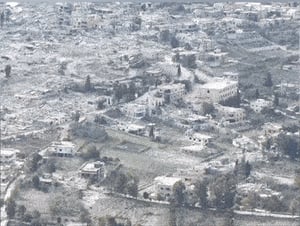
Newly declassified U.S. documents have revealed when Washington first recognized Israel’s nuclear ambitions and assessed that the country was just “6-8 weeks” away from completing a nuclear bomb.
These revelations come against the backdrop of ongoing global nuclear tensions, including Iran’s pursuit of weapons-grade uranium and IAEA Chief Rafael Grossi’s recent assertion that the nuclear deal with Iran is “no longer relevant,” as Tehran approaches nuclear-state status.
Among the declassified materials is a December 1960 report by the U.S. Joint Atomic Energy Intelligence Committee (JAEIC), which marked the first definitive American assessment that Israel’s Dimona reactor included a plutonium production facility tied to weapons development. Researchers William Burr and Prof. Avner Cohen highlight this as a pivotal moment in U.S.-Israel relations concerning nuclear weapons.
Subsequent American reports remained inconclusive on Israel’s nuclear progress until the late 1960s, by which time Israel had achieved near-military nuclear capability. This period culminated in a secret bilateral agreement between President Richard Nixon and Prime Minister Golda Meir, which granted Israel “undeclared nuclear weapons status.”
Another critical document, dated February 1967, detailed how U.S. Embassy sources informed Washington that Israel had completed or was close to completing its Dimona plutonium extraction plant and was operating the reactor at full capacity. U.S. intelligence concluded that Israel was “6-8 weeks” from a nuclear bomb at the time.
For the first time, the documents also raised the possibility that Israel had “systematically deceived” the U.S. about the nature of the Dimona project. These suspicions were echoed decades later in Israeli accounts, including a series on nuclear history featuring Benjamin Blumberg, founder of the Lekem intelligence agency, who was a key figure in the Dimona reactor’s development.
The revelations also include records of then-Prime Minister David Ben-Gurion’s responses to U.S. concerns. In December 1960, the same month the JAEIC flagged Israel’s nuclear activities, Ben-Gurion delivered a Knesset speech stating that Dimona was built for “peaceful research purposes.”
Confronted by U.S. officials over the project, Ben-Gurion emphatically denied any intention to develop nuclear weapons. In a meeting with U.S. Ambassador Ogden Reid, he rejected the accusations outright and praised the U.S., calling it “perhaps the most prosperous nation of all” and a “refuge for millions of Europe’s people.”
These documents shed new light on a pivotal chapter in U.S.-Israel relations and the early history of Israel’s controversial nuclear program, underscoring decades of strategic ambiguity.
* Ynet contributed to this article.



















